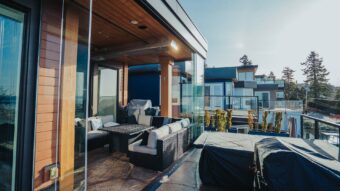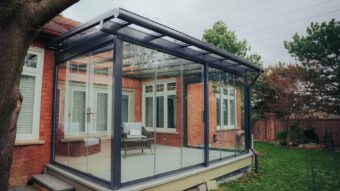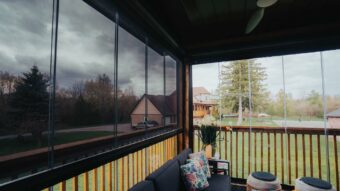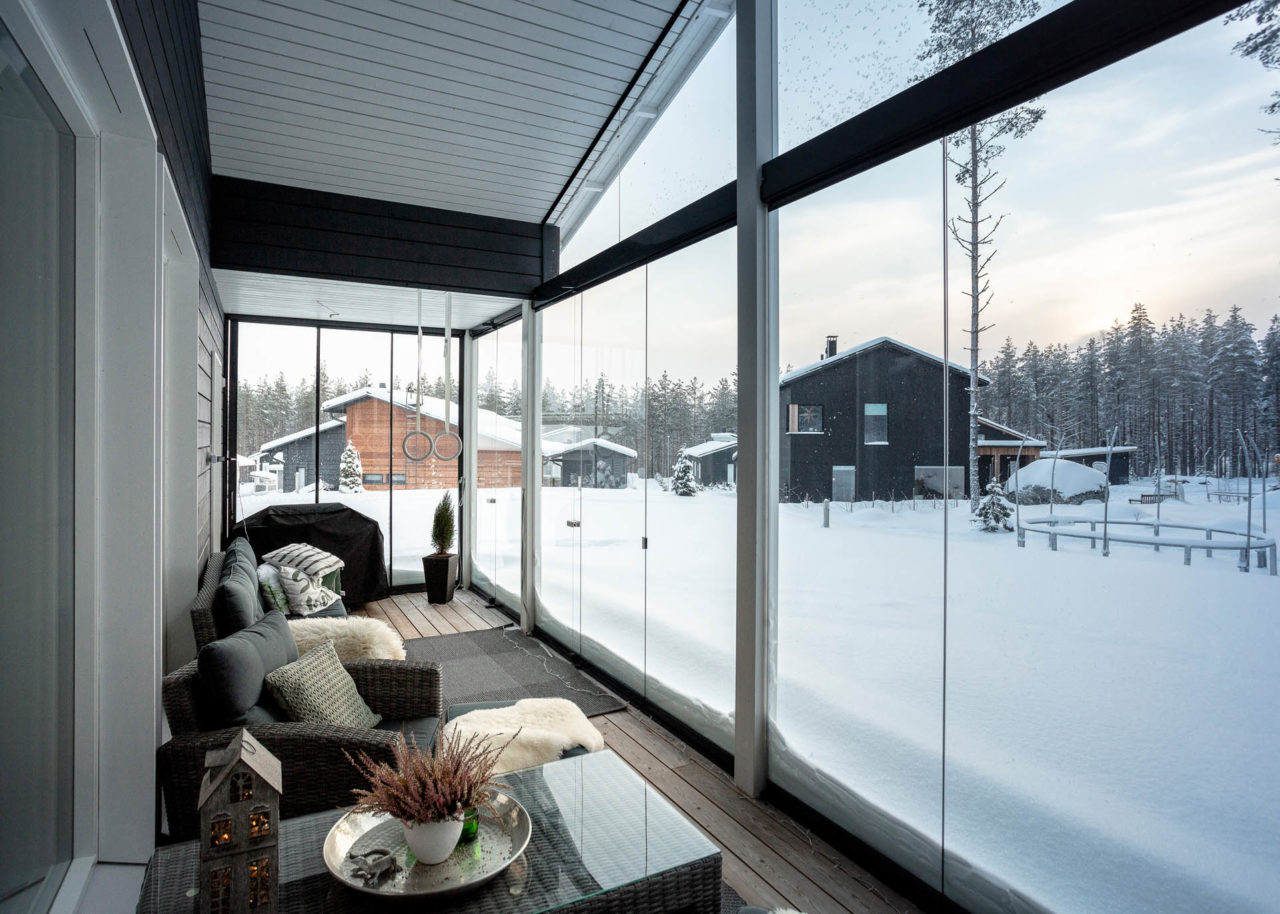
3-Season Sunrooms in Winter: Top Questions Answered for Homeowners
When you’re considering a new renovation or installation for your home, it’s natural to weigh different options. And it’s no different when it comes to deciding on the details of your three-season sunroom.
From installing a fully enclosed sunroom to choosing retractable glass panels around an existing roof, both options offer unique benefits but also raise key questions—especially as homeowners envision year-round functionality. But, one common concern is how these sunrooms perform in colder months.
We have conducted tens of thousands of sunroom consultations in Canada. From October through February, three specific questions inevitably come up in all our sunroom consultations. In this post, we’ll answer those three questions, about Lumon 3-season sunroom in winter to help you make the best-informed decision for your home.
FAQ #1: Can I use a 3-season sunroom in winter?
We often get asked if a 3-season sunroom can be used year-round, especially during the winter. While these sunrooms are not designed to retain heat on their own, with a few adjustments and the right external heat sources, you absolutely can enjoy your space during the colder months. Here are some tips to make the most of your sunroom in winter:
- Choose the right space heater: Depending on the size of your sunroom, the type and number of heaters may vary. A space heater, particularly infrared or electric, can create a cozy warmth that makes your sunroom a perfect retreat even on the chilliest days.
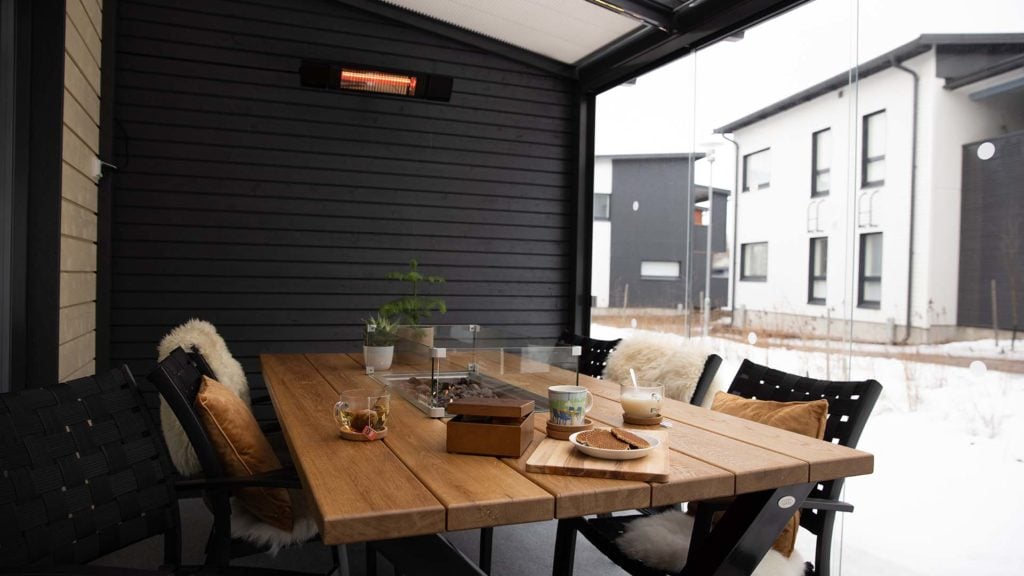
- Use baseboard heaters: For an energy-efficient and discreet option, baseboard heaters are excellent for maintaining warmth without disrupting the aesthetic of your sunroom. They are also a safe option for homes with children or pets.
- Create a cozy atmosphere: To enhance the warmth and comfort, consider adding a plush rug, cozy wool socks, and a big blanket. This will elevate the cozy winter vibe, making your sunroom the perfect place to sip hot chocolate and watch the snow fall.
- Consider a fireplace or in-floor heating: If you are building your sunroom from scratch, large heating elements like a fireplace (with code compliant ventilation), or heated floors can bring lots of warmth into the space. Our built-in ventilation gaps, allow you to slightly open the panels to ensure safety while enjoying the inviting heat from the fireplace.
Wait—did you just say built-in ventilation gaps? We did! Allow us to explain how it works.
FAQ #2: Why are there gaps between the glass panels in Lumon sunrooms?
The gaps in 3-season sunroom glass panels serve several important purposes, turning what might seem like a flaw into a functional advantage.
- Airflow & moisture control: Proper ventilation is key to preventing moisture buildup, mold, and excessive maintenance. The small gaps in the glass panels are designed to promote natural airflow, letting fresh air circulate through the room. This helps maintain a comfortable temperature and prevents condensation, keeping the space dry and low maintenance throughout the year. That being said, on rare occasions, minimal snow or rain can enter the livable space within your sunroom depending on the direction of the snowfall/rainfall. For your reference, this was a customer’s sunroom after a snowstorm.
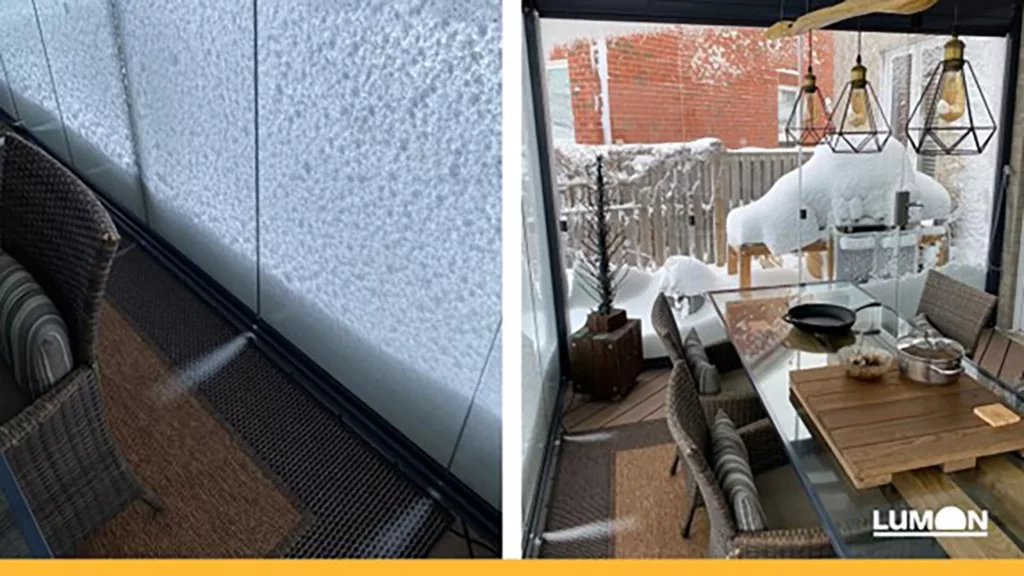
- Retractability: The defining feature and beauty of a Lumon 3-season sunroom is its versatility. While the Lumon glazing system offers protection from the elements, it is not completely sealed, and some rain or snow may enter the space due to ventilation gaps between the glass panels (see the photo above for reference). The gaps allow the panels to slide and fold smoothly, making it easy to retract the glass entirely. This feature lets you open up your sunroom on warmer days, turning it into a breezy, outdoor space. When it’s cooler, the panels slide back into place to protect from the wind and other elements while maintaining the flexibility that makes 3-season sunrooms so unique.
- Closeness to Nature: A major appeal of 3-season sunrooms is the seamless connection to the outdoors. With retractable panels, you can enjoy the feeling of being outside—whether it’s sipping coffee in the fresh morning air or enjoying a cool fall breeze. The fresh air is a wonderful benefit for our overall health and wellness, enhancing your well-being while you relax. The gaps in the glass further enhance this experience, making the sunroom feel like an extension of your yard or garden, rather than just another enclosed room.
- FSR/GFA Exemptions: In most cities across Canada, fully retractable sunroom walls don’t count towards your home’s total square footage in terms of Floor Space Ratio (FSR)/Gross Floor Area (GFA). This means the gaps and retractability allow homeowners to enjoy an extended living space without adding to property taxes, making it a more cost-effective home addition.
Now that we’ve talked about how you can our Lumon sunrooms in winters, it’s time to look at how quickly you can have the sunrooms installed.
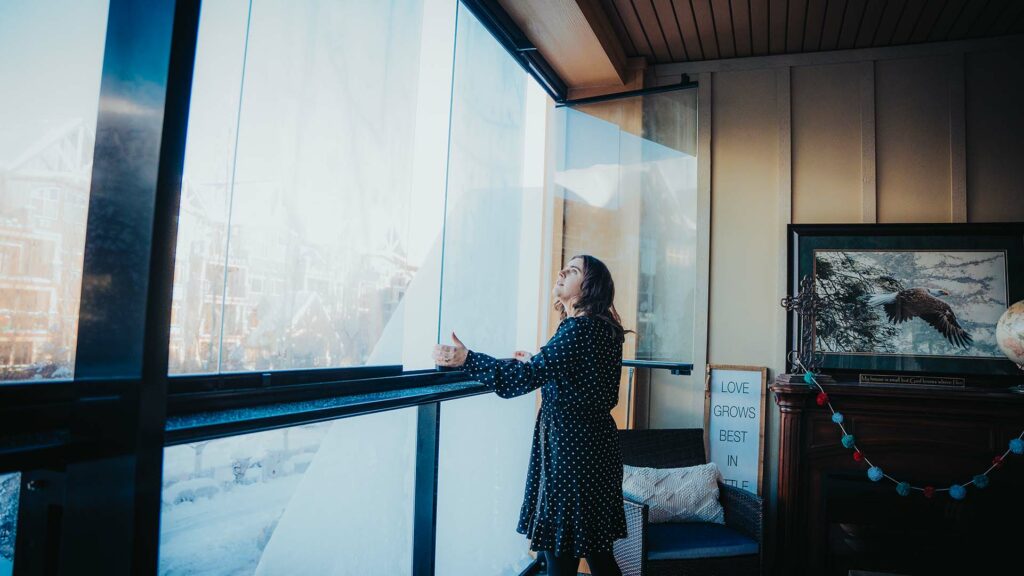
FAQ #3: Can you install a three-season sunroom in winters?
Yes, we can! Like any forward-thinking business, reducing seasonality is important to us, both for the benefit of our customers and our employees. Keeping the supply chain moving year-round ensures we maintain steady sales, manufacturing, and installation operations, as long as safety conditions allow. Being in the sunroom industry for over a decade in Canada, we can argue that installing a sunroom in the winter might also come with many benefits.
- Shorter timelines: Spring and Fall are our busiest seasons, which means longer wait times. By opting to install a sunroom in winter, you’ll often benefit from shorter timelines, bringing your dream space to life sooner without the rush.
- Boost mental well-being: Spending time in an outdoor space during the colder months can help alleviate seasonal depression. With less than 8% of North Americans spending their day outside, many experience a lack of sunlight, which affects serotonin and melatonin levels, leading to fatigue and irritability. A sunroom lets in natural light, which can boost your mood and mental health, all while shielding you from harmful UV rays.
- Ready for Spring: By installing your sunroom in winter, you’ll be ahead of the game when Spring arrives. While your neighbours are still getting quotes, you’ll be relaxing in your glazed space, enjoying the birds chirping and the early warmth of the season
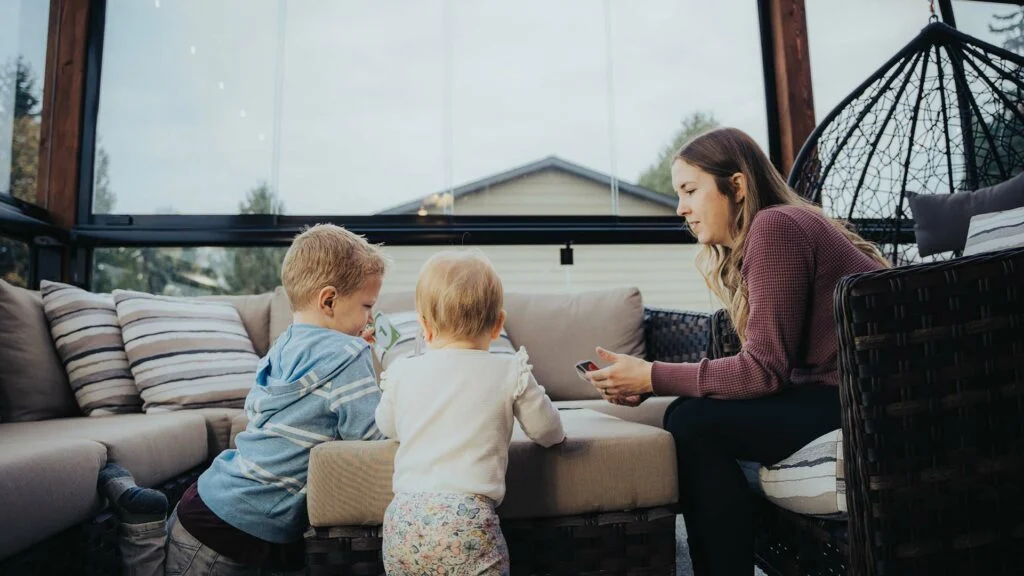
A 3-season sunroom offers more than just a versatile space to enjoy in warmer months – it can be an inviting and functional part of your home even during the winter! By understanding how to heat, and prepare your sunroom for colder weather, you can enjoy the benefits of natural light, outdoor views, and comfort. With the right setup and a few thoughtful adjustments, your sunroom can become a favorite winter retreat, offering both practical and mental health benefits. So, don’t let the cold stop you from making the most of your sunroom—enjoy it all year long!
Still unsure if three-season sunrooms are a good match for you? Our design consultants are here to help you make the best choice tailored to your home and lifestyle. Reach out to start transforming your outdoor space into a beautiful, comfortable extension of your livable area.
If you have more questions you’ll like answered, feel free to reach out. Our experienced design consultants will be happy to answer any questions you may have.
You might also be interested in..
-
How Big or Small of a Space Can We Glaze?
Read more…If you’ve been thinking about transforming your balcony, patio, or terrace into a more comfortable, usable space, you’ve probably come across the idea of balcony glazing systems. These innovative systems use frameless or minimally framed glass panels to create a sheltered outdoor room that stays protected from wind, rain, and noise while letting in natural light and fresh air.
-
Worthwhile Investments You Can Make to Your Outdoor Space
Read more…Modern life craves balance. We seek peaceful corners in our homes—spaces to unwind, host friends, or simply bask in a bit of sunlight. But for many, that outdoor space ends up neglected, waiting on “perfect weather” or “more free time” that never quite arrives.
-
What Made This Homeowner Say ‘Yes’ to a Major Outdoor Upgrade
Read more…When Adam Chan set out to enhance his outdoor space in Brampton, Ontario, he was looking for more than just a functional glass enclosure. He wanted something beautiful, durable, and thoughtfully designed, too.
